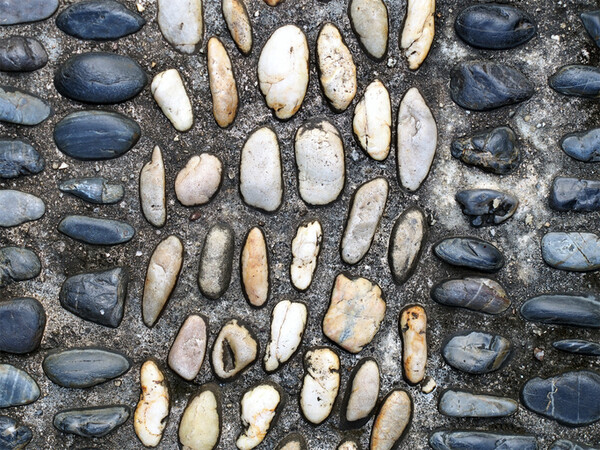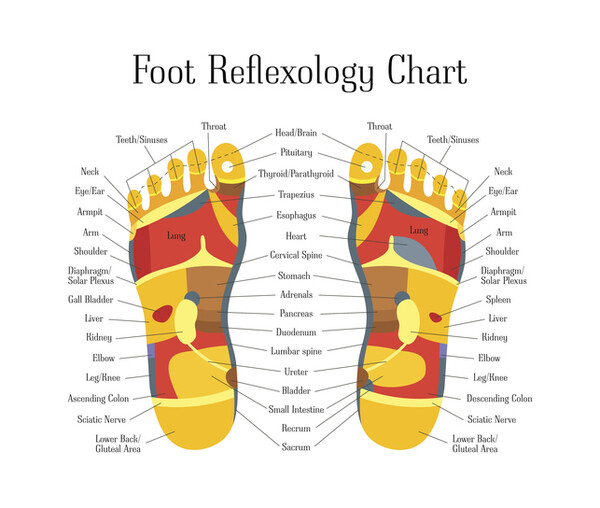Exploring the unique culture of care in Korea
What does it mean to care -- deeply, instinctively, and culturally? In this series, "Caring the Korean Way," we explore the distinct practices, beliefs, and values that shape how Koreans care for themselves and each other. From time-honored folk remedies to modern reinterpretations of healing, each story offers a window into the unique ways care is expressed in Korean life. -- Ed.

In many Korean parks, you might spot a peculiar sight -- people, often senior citizens, slowly walking barefoot over paths covered in smooth stones or pebbles.
These paths often come with signs extolling the benefits of the barefoot acupressure walk -- everything from improving circulation to preventing dementia.
This is maybe why many Koreans, grimacing in pain with each step, persevere regardless. At home, some Koreans even wear spiked foot acupressure slippers as they do household chores.
This practice of foot acupressure, enduring sharp sensations underfoot, is believed to yield health benefits. While walking barefoot for wellness is not unique to Korea, the dedicated “foot acupressure paths” and spiky massage slippers are a distinctive part of East Asian health culture rarely seen in the West.
Why do Koreans embrace this painful practice? Does it actually improve health, or is it just folk wisdom?
A painful path to better health?
For some in Korea, the foot is affectionately known as the second heart. This phrase reflects the traditional belief that the feet play a crucial role in circulating blood and vital energy throughout the body.
According to the principles of reflexology, the feet are a microcosm of the entire body. Certain acupressure points on the soles correspond to internal organs and systems.
By pressing or walking on these points, people believe they can stimulate circulation and energy flow, thereby improving the function of distant organs and overall health.
The immediate effect of walking on a smooth stone or pebble path is often described as painful yet oddly invigorating.
Notably, older individuals with chronic leg swelling or a feeling of heavy legs often swear that regular foot acupressure reduces their edema and achiness, while others claim that steady pressure on the soles helps flush out toxins and excess fluid via the lymph system, reducing swelling -- even alleviating the puffiness in one’s face.

This idea has gained enough traction that some younger Koreans use acupressure slippers or balls, while not as punishing as those used by elders, as a beauty hack, hoping to deflate a bloated face by morning.
Beyond circulation, Korean folk wisdom credits foot acupressure with a laundry list of health perks.
These include better sleep and stress relief, and even improved digestion or headache relief by targeting the corresponding reflex points on the sole.

Local parks often display colorful reflexology maps showing which part of the foot affects which organ.
The logic goes that if a spot on the foot hurts a lot, perhaps the related organ needs attention, and stimulating that point will ultimately help.
While these claims are largely anecdotal, they remain popular. Many find the practice empowering as a simple self-care routine -- just take off your shoes and walk, and you might prevent illness or feel rejuvenated.
Do foot acupressure paths really work?
With so many grand claims, modern researchers have naturally been curious whether any of these benefits stand up to scientific testing.
However, both Korean and Western medical experts remain skeptical about whether pressing points on the feet can cure specific diseases. Improvements are generally modest, often linked to relaxation and stress reduction rather than actual organ healing.
In other words, simply getting a soothing foot rub might reduce stress and pain perception, but it does not mean you have fixed a failing liver by standing on a golf ball.
Kim Seok-hee, a spokesperson for the Association of Korean Medicine, explained to Korea Biomedical Review that a theory known as “foot acupuncture therapy” exists in traditional practice.
This approach maps parts of the body onto the soles of the feet, claiming that stimulating specific points could affect corresponding organs such as the face, lungs, or heart.
“The idea is out there, and you’ll find books and charts on it,” Kim said. “But it has not been scientifically proven, and even within Korean medicine, it is not a mainstream treatment.”
In reality, it is more often used in informal or folk practices, Kim added.
Where both modern research and traditional perspectives overlap is in circulation.
Poor blood flow often leads to cold, numb hands and feet.
According to Kim, stimulating the soles through reflexology paths can temporarily boost local circulation, which explains why many people feel warmer and more relaxed afterward.
This helps explain why many people feel warmer or more relaxed afterward.
Scientific studies also support these modest benefits.
A U.S. National Institute on Aging study found that seniors who walked regularly on cobblestone mats improved balance and mobility and even saw reductions in blood pressure, compared with those who walked on flat ground.
Researchers noted that the uneven surface not only massages the soles but also challenges stabilizer muscles. Other small studies have reported reduced fatigue and better sleep quality in groups such as dialysis patients or women after childbirth, likely due to enhanced relaxation and circulation.
Taken together, the evidence suggests that foot acupressure is not a cure for internal organ diseases, as some reflexology charts claim, but it can enhance general well-being.
Kim emphasized that true cardiovascular health depends more on strengthening the heart and managing systemic issues like high cholesterol or blood clots.
In other words, reflexology paths may serve as a useful low-impact exercise and relaxation tool, but they should not be mistaken for medical treatment.
Other health experts have also caution that while foot acupressure is generally safe, it can cause problems if overdone or done by those with certain conditions.
“The goal is gentle stimulation, not outright pain or injury,” another Korean medicine doctor said, asking to remain anonymous. “Too much pressure can bruise the foot tissues, in fact, pushing it to the point of true numbness is a red flag, not a sign of mastery.”
Certain individuals should approach with extra caution.
An orthopedics doctors who runs a clinic in Songpa-gu stressed that diabetics with neuropathy or anyone with serious foot problems should not try acupressure walking.
“If you cannot properly feel pain in your feet, you might injure yourself without realizing – not a risk worth taking,” he said. “For most healthy people, however, gentle foot acupressure is fine.”
Just treat it as a massage, not a replacement for, standard medical care, he added.
For many Koreans, however, the foot acupressure path remains less about proven medical science and more about a cultural ritual of perseverance, wellness, and community.
Related articles
- [Caring the Korean Way] What does losing your hair mean in Seoul?
- [Caring the Korean Way] Mugwort magic? The ancient secret to soothing period pain
- [Caring the Korean Way] Sambok and samgyetang: beating the heat with tradition
- [Caring the Korean Way] Children who inject themselves to be tall under parental pressure
- [Caring the Korean Way] Why Korean grandmas prick your thumb after a big meal
- [Caring the Korean Way] The curious case of Korea’s luxury fatigue fighter gongjin-dan
- [Caring the Korean Way] What belly massage really does for children with stomach pain
- [Caring the Korean Way] Mosquito season delayed but not gone: Korea braces for quirky battles
- [Caring the Korean Way] Korean seasonal superstitions: folklore behind traditional holidays

